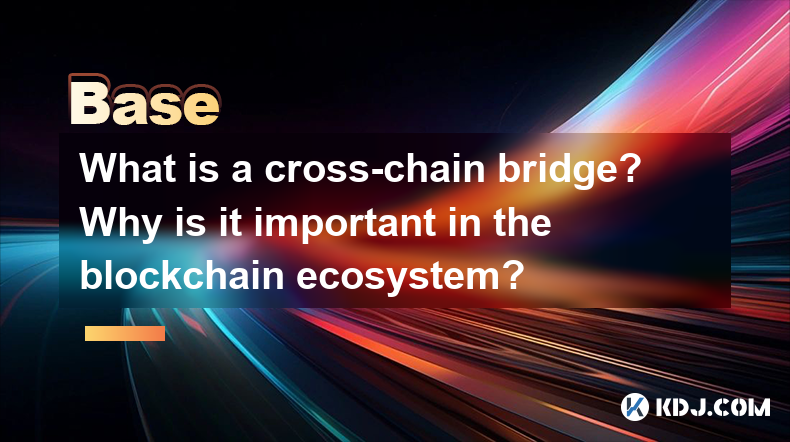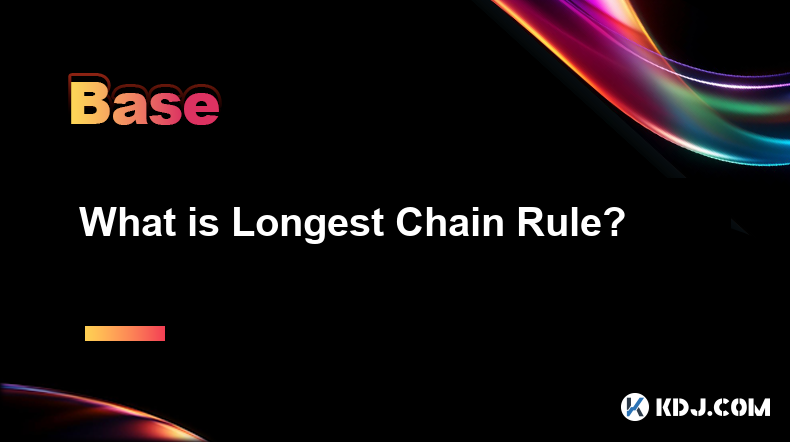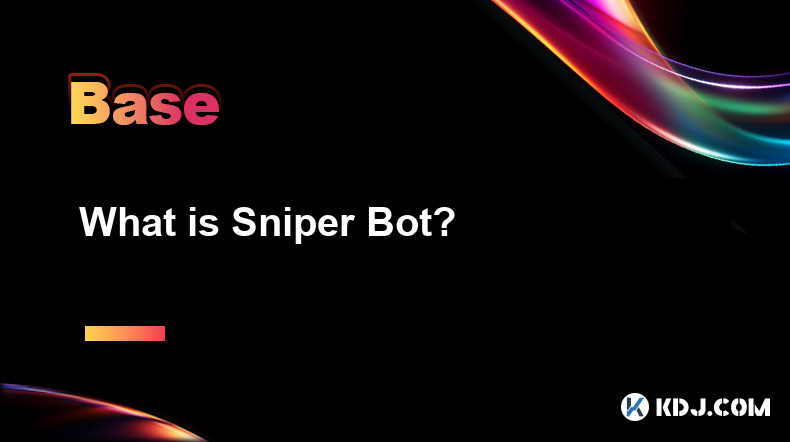-
 Bitcoin
Bitcoin $79,309.9469
5.46% -
 Ethereum
Ethereum $1,575.4794
6.76% -
 Tether USDt
Tether USDt $0.9996
0.03% -
 XRP
XRP $1.8684
10.75% -
 BNB
BNB $559.1592
4.86% -
 USDC
USDC $0.9998
-0.02% -
 Solana
Solana $108.9193
9.75% -
 Dogecoin
Dogecoin $0.1493
10.49% -
 TRON
TRON $0.2326
3.85% -
 Cardano
Cardano $0.5862
10.61% -
 UNUS SED LEO
UNUS SED LEO $8.9694
0.72% -
 Toncoin
Toncoin $3.1094
5.06% -
 Chainlink
Chainlink $11.6110
10.41% -
 Avalanche
Avalanche $17.1493
12.22% -
 Stellar
Stellar $0.2310
12.64% -
 Shiba Inu
Shiba Inu $0.0...01132
6.17% -
 Hedera
Hedera $0.1578
22.08% -
 Sui
Sui $2.0151
12.13% -
 MANTRA
MANTRA $6.2854
6.64% -
 Polkadot
Polkadot $3.5990
7.58% -
 Bitcoin Cash
Bitcoin Cash $276.8413
7.33% -
 Litecoin
Litecoin $71.4393
9.84% -
 Dai
Dai $1.0000
0.01% -
 Ethena USDe
Ethena USDe $0.9990
0.07% -
 Bitget Token
Bitget Token $4.1736
10.38% -
 Pi
Pi $0.5864
5.86% -
 Hyperliquid
Hyperliquid $11.9119
22.51% -
 Monero
Monero $207.4588
8.04% -
 Uniswap
Uniswap $5.1898
7.27% -
 OKB
OKB $52.1447
2.68%
What is a cross-chain bridge? Why is it important in the blockchain ecosystem?
Cross-chain bridges enable asset and data transfer between blockchains, enhancing interoperability and liquidity while facing security and complexity challenges.
Apr 07, 2025 at 02:21 am

A cross-chain bridge is a crucial component in the blockchain ecosystem that enables the transfer of assets and data between different blockchain networks. This technology is essential for enhancing interoperability and facilitating seamless communication between disparate blockchain systems. By allowing tokens, data, and other digital assets to move from one blockchain to another, cross-chain bridges play a pivotal role in creating a more interconnected and efficient blockchain environment.
How Cross-Chain Bridges Work
Cross-chain bridges operate by locking assets on the source blockchain and minting equivalent assets on the destination blockchain. This process involves several key steps:
- Initiating the Transfer: A user initiates a transfer by sending assets to a smart contract on the source blockchain.
- Locking the Assets: The smart contract locks the assets on the source blockchain, ensuring they cannot be used until the transfer is complete.
- Minting on the Destination Chain: Once the assets are locked, an equivalent amount of tokens is minted on the destination blockchain.
- Verification and Release: After the transfer is verified, the locked assets on the source chain are released, and the user can use the newly minted tokens on the destination chain.
This mechanism ensures that the total supply of tokens remains constant across both chains, maintaining the integrity and security of the transfer process.
Types of Cross-Chain Bridges
There are several types of cross-chain bridges, each designed to meet different needs within the blockchain ecosystem:
- Centralized Bridges: These bridges are operated by a single entity that manages the transfer process. While they can be faster and more user-friendly, they introduce a single point of failure and potential security risks.
- Decentralized Bridges: These bridges operate without a central authority, relying on smart contracts and consensus mechanisms to facilitate transfers. They offer greater security and decentralization but can be more complex to use.
- Hybrid Bridges: Combining elements of both centralized and decentralized models, hybrid bridges aim to balance security, speed, and user experience.
Importance of Cross-Chain Bridges in the Blockchain Ecosystem
Cross-chain bridges are vital for several reasons within the blockchain ecosystem:
- Interoperability: They enable different blockchain networks to communicate and share data, fostering a more cohesive and integrated ecosystem.
- Liquidity: By allowing assets to move freely between chains, cross-chain bridges enhance liquidity and enable users to access a broader range of assets and services.
- Scalability: They help distribute the load across multiple blockchains, improving the overall scalability of the network.
- Innovation: Cross-chain bridges facilitate the development of new applications and services that can leverage the strengths of multiple blockchain networks.
Challenges and Risks Associated with Cross-Chain Bridges
While cross-chain bridges offer numerous benefits, they also come with certain challenges and risks:
- Security: The process of locking and minting assets across chains can be vulnerable to hacks and exploits if not properly secured.
- Complexity: The technical complexity of cross-chain bridges can make them difficult to implement and use, potentially limiting their adoption.
- Regulatory Uncertainty: The regulatory environment surrounding cross-chain bridges is still evolving, which can pose challenges for developers and users.
Examples of Cross-Chain Bridges
Several notable cross-chain bridges have been developed to address the need for interoperability within the blockchain ecosystem:
- Wrapped Bitcoin (WBTC): WBTC is a tokenized version of Bitcoin that can be used on the Ethereum blockchain. It is created through a process where Bitcoin is locked in a custodial wallet, and an equivalent amount of WBTC is minted on Ethereum.
- Polkadot: Polkadot is a multi-chain framework that enables different blockchains to interoperate and share information. It uses a relay chain to facilitate communication between parachains, which are individual blockchains within the Polkadot network.
- Cosmos: Cosmos is a network of interconnected blockchains that use the Inter-Blockchain Communication (IBC) protocol to enable cross-chain transfers. It aims to create an "Internet of Blockchains" where different networks can seamlessly interact.
Implementing a Cross-Chain Bridge
For those interested in implementing a cross-chain bridge, the process involves several detailed steps:
- Research and Planning: Begin by researching existing cross-chain bridge solutions and identifying the specific needs of your project. Determine whether a centralized, decentralized, or hybrid approach is best suited for your goals.
- Smart Contract Development: Develop smart contracts for both the source and destination blockchains. These contracts will handle the locking and minting of assets. Ensure that the contracts are thoroughly tested and audited for security.
- Integration and Testing: Integrate the smart contracts into the respective blockchains and conduct extensive testing to ensure that the bridge functions as intended. This includes testing for various scenarios and edge cases.
- Deployment and Monitoring: Deploy the cross-chain bridge and monitor its performance closely. Be prepared to address any issues that arise and make necessary adjustments to improve the bridge's functionality and security.
Frequently Asked Questions
Q: Can cross-chain bridges be used to transfer any type of asset between blockchains?
A: While cross-chain bridges are primarily used for transferring tokens, they can also be used to transfer other types of digital assets, such as NFTs and data. However, the specific capabilities of a bridge depend on its design and the blockchains it connects.
Q: Are there any fees associated with using cross-chain bridges?
A: Yes, using cross-chain bridges often involves fees, which can vary depending on the bridge and the blockchains involved. These fees typically cover the costs of locking and minting assets, as well as any network fees associated with the transactions.
Q: How can users ensure the security of their assets when using cross-chain bridges?
A: To ensure the security of their assets, users should choose reputable and well-audited cross-chain bridges. It's also important to monitor the bridge's performance and be aware of any potential security updates or issues. Additionally, users should never share their private keys or sensitive information with third parties.
Q: Can cross-chain bridges be used to connect private and public blockchains?
A: Yes, cross-chain bridges can be designed to connect private and public blockchains, although this can be more complex due to the different security and privacy requirements of each type of network. Specialized bridges may be needed to handle these unique challenges.
Disclaimer:info@kdj.com
The information provided is not trading advice. kdj.com does not assume any responsibility for any investments made based on the information provided in this article. Cryptocurrencies are highly volatile and it is highly recommended that you invest with caution after thorough research!
If you believe that the content used on this website infringes your copyright, please contact us immediately (info@kdj.com) and we will delete it promptly.
- Wyoming Is Launching a Stablecoin Later This Year, Which Could Be the First Issued by a Public Entity in the U.S.
- 2025-04-08 14:20:12
- BNB vs SOL: Which Crypto to Invest in?
- 2025-04-08 14:20:12
- Big News for XRP as Ripple CEO Meets with Trump and Sparks Intrigue Within the Cryptocurrency Community Hinting at Promising Developments.
- 2025-04-08 14:15:12
- Interactive Brokers Expands Cryptocurrency Portfolio by Adding Four Major Altcoins
- 2025-04-08 14:15:12
- US stocks fall on Wednesday, dragged down by a sharp sell-off in tech stocks, as renewed trade war concerns rattle investors
- 2025-04-08 14:10:12
- Just 24 Hours After Adding Its Name to the Roster of Companies Pursuing a Bitcoin (BTC) Treasury Strategy, GameStop (GME) — Led by Its CEO Ryan Cohen — Is Also Adding Its Name to Those Firms Issuing Convertible Debt to Raise Funds for BTC Acquisition
- 2025-04-08 14:10:12
Related knowledge

What is Serenity?
Apr 08,2025 at 02:00pm
Serenity, also known as Ethereum 2.0, represents a major upgrade to the Ethereum blockchain. This ambitious project aims to address the scalability, security, and sustainability issues faced by the current Ethereum network. Serenity is not a single update but a series of upgrades that will transform Ethereum into a more efficient and robust platform. Th...

What is Finality Gadget?
Apr 08,2025 at 04:14am
The Finality Gadget is a crucial component in the architecture of certain blockchain networks, particularly those that utilize a hybrid consensus mechanism. It plays a pivotal role in ensuring the finality of transactions, which means that once a transaction is confirmed, it cannot be altered or reversed. This article delves into the intricacies of the ...

What is Longest Chain Rule?
Apr 08,2025 at 07:50am
The Longest Chain Rule is a fundamental concept in blockchain technology, particularly in the context of cryptocurrencies like Bitcoin. This rule is crucial for maintaining the integrity and security of the blockchain network. In essence, the Longest Chain Rule dictates that the valid blockchain is the one with the most cumulative proof-of-work, which i...

What is Orphan Block?
Apr 08,2025 at 05:00am
What is an Orphan Block?In the world of cryptocurrencies, particularly in blockchain technology, the term orphan block is frequently encountered. An orphan block is a block that has been mined and added to the blockchain but is later discarded or replaced by another block. This phenomenon occurs due to the decentralized nature of blockchain networks, wh...

What is Mempool?
Apr 08,2025 at 12:36pm
What is Mempool?In the world of cryptocurrencies, particularly Bitcoin, the term Mempool is frequently mentioned. But what exactly is a Mempool, and why is it important? A Mempool, short for memory pool, is a critical component of the blockchain network that serves as a temporary storage area for unconfirmed transactions. When a user initiates a transac...

What is Sniper Bot?
Apr 07,2025 at 10:43pm
A Sniper Bot is a type of automated trading software used within the cryptocurrency market to execute trades at optimal times, often milliseconds before other traders. These bots are designed to take advantage of new token listings, price fluctuations, and other market opportunities to buy or sell assets quickly and efficiently. The primary goal of a Sn...

What is Serenity?
Apr 08,2025 at 02:00pm
Serenity, also known as Ethereum 2.0, represents a major upgrade to the Ethereum blockchain. This ambitious project aims to address the scalability, security, and sustainability issues faced by the current Ethereum network. Serenity is not a single update but a series of upgrades that will transform Ethereum into a more efficient and robust platform. Th...

What is Finality Gadget?
Apr 08,2025 at 04:14am
The Finality Gadget is a crucial component in the architecture of certain blockchain networks, particularly those that utilize a hybrid consensus mechanism. It plays a pivotal role in ensuring the finality of transactions, which means that once a transaction is confirmed, it cannot be altered or reversed. This article delves into the intricacies of the ...

What is Longest Chain Rule?
Apr 08,2025 at 07:50am
The Longest Chain Rule is a fundamental concept in blockchain technology, particularly in the context of cryptocurrencies like Bitcoin. This rule is crucial for maintaining the integrity and security of the blockchain network. In essence, the Longest Chain Rule dictates that the valid blockchain is the one with the most cumulative proof-of-work, which i...

What is Orphan Block?
Apr 08,2025 at 05:00am
What is an Orphan Block?In the world of cryptocurrencies, particularly in blockchain technology, the term orphan block is frequently encountered. An orphan block is a block that has been mined and added to the blockchain but is later discarded or replaced by another block. This phenomenon occurs due to the decentralized nature of blockchain networks, wh...

What is Mempool?
Apr 08,2025 at 12:36pm
What is Mempool?In the world of cryptocurrencies, particularly Bitcoin, the term Mempool is frequently mentioned. But what exactly is a Mempool, and why is it important? A Mempool, short for memory pool, is a critical component of the blockchain network that serves as a temporary storage area for unconfirmed transactions. When a user initiates a transac...

What is Sniper Bot?
Apr 07,2025 at 10:43pm
A Sniper Bot is a type of automated trading software used within the cryptocurrency market to execute trades at optimal times, often milliseconds before other traders. These bots are designed to take advantage of new token listings, price fluctuations, and other market opportunities to buy or sell assets quickly and efficiently. The primary goal of a Sn...
See all articles






















































































